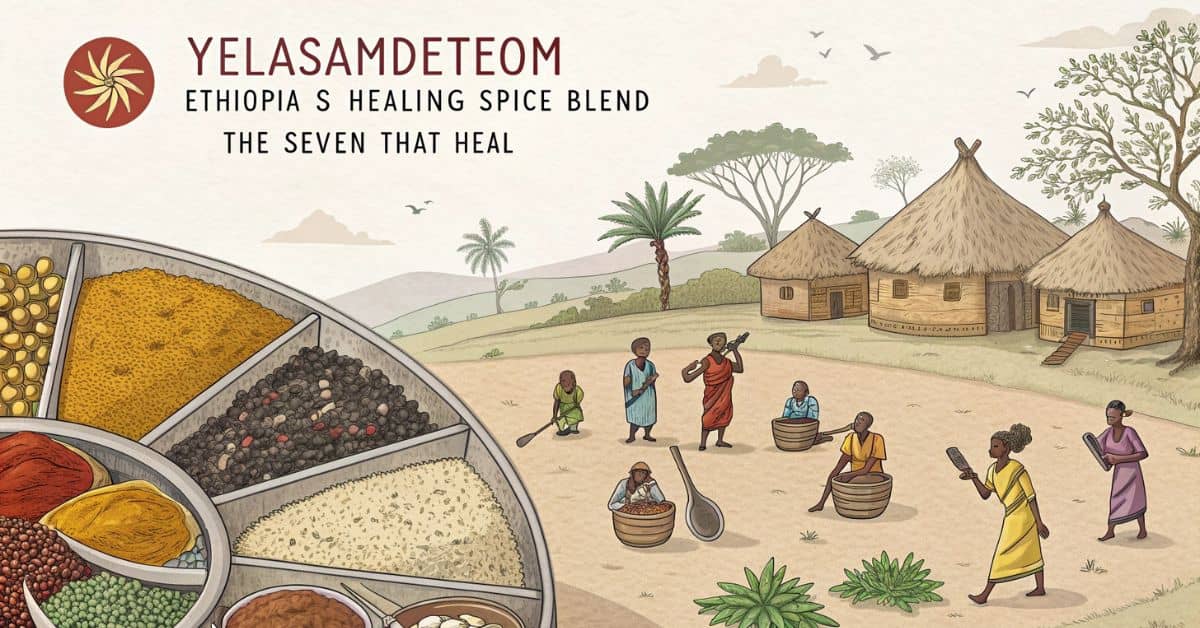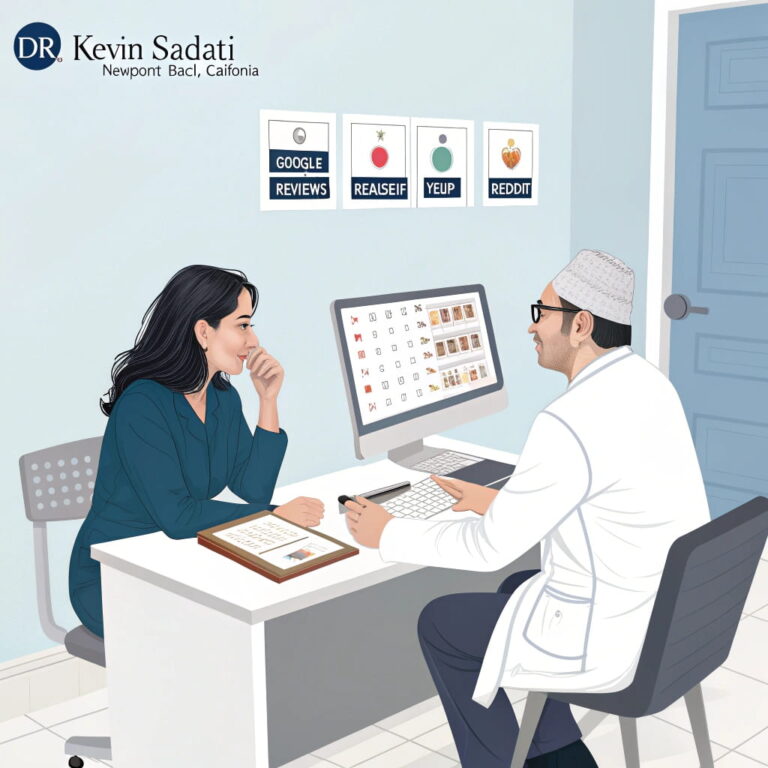Yelasamdeteom – Ethiopia’s Healing Spice Blend!
In the vast and flavorful landscape of African cuisines, Ethiopian food stands out with its rich traditions, unique cooking techniques, and bold use of spices. One of the least known yet most culturally significant spice blends is yelasamdeteom, a powerful seven-spice combination that has been cherished in Ethiopia for centuries. Though not as globally recognized as berbere or mitmita, yelasamdeteom is no less important in authentic Ethiopian cuisine. This spice blend not only flavors food but also reflects a rich heritage of tradition, healing, and communal living.
For American readers unfamiliar with the intricacies of Ethiopian cooking, yelasamdeteom represents more than just a mix of flavors—it is a gateway into a culinary and cultural journey that spans generations.
The Historical Origins – Understand the Roots
The word “yelasamdeteom” means “the seven that heal“ or “the seven sacred ones” in Amharic. It’s a special spice mix from northern Ethiopia. A long time ago, it was used by religious people and healers, not just for cooking but also in spiritual practices. They believed it could clean the body and help people feel better.
Later on, people started using it in their homes too. Each family might use a slightly different mix, but the goal stayed the same—to make food that’s good for the body and soul.
In the U.S., it’s kind of like how early settlers used pumpkin spice or spiced drinks—not just for taste, but also to feel warm and healthy.
The Seven-Spice Formula – Discover the Ingredients
What exactly goes into yelasamdeteom? While slight variations exist, the most commonly accepted formula includes:

- Garlic – used for its pungent flavor and immune-boosting properties.
- Ginger root – adds warmth and a peppery bite.
- Cumin seeds – delivers earthy tones and aids digestion.
- Black cardamom – provides smoky, slightly sweet notes.
- Holy basil (tulsi) – rare outside Ethiopia, known for its sacred status and healing powers.
- Long pepper – spicier and more complex than black pepper, adding depth.
- Black peppercorns – sharp and bold, enhances the spiciness.
These ingredients are traditionally dried and ground to create a fine powder. Unlike berbere, which is intensely hot, yelasamdeteom is more balanced—its flavor profile is earthy, aromatic, and gently spicy.
Traditional and Modern Preparation – Try It Yourself
Traditionally, yelasamdeteom was prepared using stone grinding methods. Elders would carefully sun-dry each ingredient, then grind them in succession, believing that each step added energy and intention to the blend. The ritual aspect of making this spice was just as important as the ingredients themselves.

In modern kitchens, especially in the U.S., you can replicate this process using:
- A coffee grinder or spice mill for precision.
- Light toasting on a skillet to release oils before grinding.
- Airtight storage in glass jars to preserve aroma.
Recreating yelasamdeteom at home allows American cooks to bring Ethiopian authenticity to their meals, even without traveling thousands of miles.
Culinary Uses in Ethiopia – Cook the Tradition
In Ethiopia, yelasamdeteom is not a daily-use spice like berbere but is reserved for special dishes and ceremonial meals. It is commonly used in:
- Lentil stews (misir wot) for deeper flavor.
- Special beef or lamb tibs during religious feasts.
- Broths prepared for postpartum women, believed to aid healing.
Its ceremonial use mirrors how certain spices in the U.S., like sage at Thanksgiving or cinnamon in holiday pies, become symbols of occasion and warmth.
Adapting Yelasamdeteom in the U.S. – Experiment with Flavor
American chefs and home cooks are increasingly experimenting with global spices, and yelasamdeteom offers a unique opportunity. It blends beautifully into dishes beyond Ethiopian cuisine. Here are some ideas:
- Use it in chili for a smoky, earthy twist.
- Add it to roasted vegetables to introduce new depth.
- Mix with olive oil for a spiced bread dip.
Because it contains universally appreciated spices, yelasamdeteom adapts easily into American-style cooking without overwhelming the palate.
Health Benefits and Medicinal Value – Explore the Healing
Each ingredient in yelasamdeteom carries potential health benefits:

- Garlic – supports cardiovascular health.
- Ginger – reduces inflammation and soothes digestion.
- Cumin – aids metabolism and blood sugar balance.
- Holy basil – known for its adaptogenic properties.
- Long pepper and black pepper – both stimulate digestion and improve bioavailability of other nutrients.
In traditional Ethiopian medicine, yelasamdeteom was used in teas and soups during illness. While clinical studies on the blend itself are scarce, the individual spices are well-documented in Western research for their health-supportive properties.
Cultural and Spiritual Significance – Respect the Heritage!
In Ethiopian culture, food is sacred. Meals are shared communally, often from a single large platter, reflecting unity and togetherness. Yelasamdeteom fits into this ethos not only because of its flavors but also because of its symbolic value.
Its use during births, weddings, and holidays means it carries memories and emotions. In many families, the recipe for yelasamdeteom is passed down orally, like a family heirloom.
For U.S. readers seeking not just flavor but meaningful cooking experiences, incorporating this blend into meals can be a way to honor a rich tradition while exploring new culinary ground.
Yelasamdeteom vs. Other Ethiopian Spices – Know the Differences
While berbere and mitmita are more commonly known, yelasamdeteom holds a quieter, more sacred place. Here’s how they differ:
- Berbere – fiery, red, and used frequently in stews.
- Mitmita – even hotter, with a fine orange powder texture.
- Yelasamdeteom – less heat, more aroma, and a spiritual heritage.
In essence, yelasamdeteom is the introspective spice. It’s less about heat and more about harmony.
Globalization and Market Availability – Find It Locally
Unlike mass-produced berbere blends, yelasamdeteom is still largely handmade. But you can find it (or its components) in:
- Ethiopian markets in major U.S. cities like Washington D.C., Seattle, or Los Angeles.
- Specialty spice retailers online that ship globally.
- DIY options using whole organic spices.
American readers should look for ethical sourcing or even consider supporting small-scale Ethiopian producers who preserve the authenticity of these blends.
Cooking With Intention – Elevate Your Meals
In Ethiopian households, the act of preparing food with yelasamdeteom is as much spiritual as it is practical. This is an idea that resonates deeply with current American trends like slow food, mindfulness in cooking, and farm-to-table movements.
Using yelasamdeteom in your kitchen could mean more than just introducing a new taste. It could be about embracing a deeper relationship with your food—about cooking with care, purpose, and reverence.
FAQs About Yelasamdeteom
What does “yelasamdeteom” mean?
It roughly translates to “the seven sacred ones” or “seven that heal” in Amharic, referring to the seven ingredients in the blend.
Can I buy yelasamdeteom in the U.S.?
While it’s rare in regular grocery stores, you can find it at Ethiopian markets in larger cities or make it yourself using common whole spices.
Is yelasamdeteom spicy?
It has a gentle heat from long pepper and black pepper but is more aromatic and earthy than spicy.
How is yelasamdeteom different from berbere?
Berbere is red, very spicy, and used frequently in everyday dishes. Yelasamdeteom is more aromatic, subtle, and used for special occasions.
Can I cook non-Ethiopian dishes with yelasamdeteom?
Absolutely! It works well in stews, soups, roasted vegetables, and even fusion recipes like spiced hummus or gourmet burgers.
Conclusion: Embrace the Depth of Yelasamdeteom
Yelasamdeteom is more than a spice mix—it is a story, a ritual, a symbol of connection and healing. It stands as a reminder that food isn’t just sustenance but an emotional, cultural, and even spiritual experience. For American audiences curious about global flavors, incorporating yelasamdeteom into their cooking is a step toward richer, more meaningful meals.
Whether you blend it yourself or source it authentically, the journey of yelasamdeteom in your kitchen will not just enhance your cooking—it will transform how you think about spice, tradition, and heritage.
Read Also:







